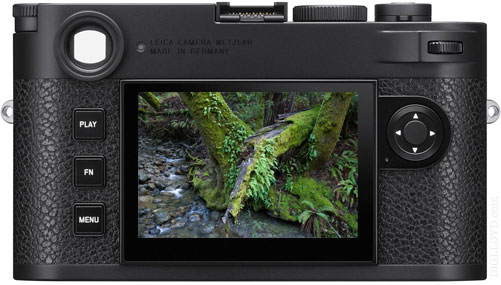Leica M11 Electronic Shutter: what is the Sensor Readout Transit Time?
re: Blur and Image Deformation with Fully Electronic Shutter
re: Fujifilm GFX100: Sensor Readout Transit Time for 16-bit vs 14-bit Capture
John F writes:

Do you have any thoughts about the M11 sensor? Is it a stacked sensor? What is the scan rate of digital data? The Sony A1 is 1/260 per second, hence eliminating rolling shutter distortions. I’ve read the M11 electronic shutter should be used mainly on stationary subjects. What is the likelihood of rolling shutter distortions?
[later] Since then Jonathan Slack answered my question. The scan rate is 1/10th of a second, like the Sony 7R4. The Sony A1 scans at 1/260th of a second. The M11, I’d say, has the Sony A7R4 sensor. Slack said the electronic shutter is good for shootingstationary or slow moving subjects and shooting in bright sunlight wide open without needing a ND filter.
DIGLLOYD: a scan rate of 1/10 second = 100 milliseconds is unattractive. It means you cannot shoot handheld with ES without getting at least subtle image deformation, even at 1/16000 shutter speed. And it means that even tripod-based images are subject to it (wind, movement, etc). Still, it was not so terrible on the Sony A7R IV and generally went unnoticed for me.
There are also bokeh effects of a slow ES with fast lenses (f/1.4, a tiny bit for f/2); see Effect of Shutter Type on Bokeh vs Shutter Speed and Aperture.
Post as written before learning the scan rate...
I don’t know that Leica has released few specifics about the sensor, only that it is BSI (backside illuminated). I’m guessing it is a derivative of the Sony A7R IV sensor, but without PDAF pixels. Beacuse the resolution and pixel pitch (3.76 microns) are identical.
Regrettably I forgot to check the sensor transit time for the Leica M11. I’ve asked the reader who loaned it to me to shoot a frame for me under LED lighting with a subject that will show how many bands appear at 120 Hz lighting.
The sensor transit time is how long it takes the camera to read-out the sensor. The shutter speed is irrelevant; you might have 1/8000 second in use but it will still take 1/30 second to read-out the sensor if that is the sensor transit time. Images free from the smearing/distortion “jello effect must avoid movement within the readout time window.
Leica offers a “hybrid shutter” option, perhaps to address the concern. But not necessarily so.
I’m guessing something on the order of 1/30 second for the Leica M11, but if the 1/180 second flash sync is electronic (not specified), then it would obviously be at least 1/180 second... but I’d bet that it is mechanical sync. The 4.5fps max shooting speed is likely a limitation of general processing speed, and likely not indicative of a 222ms (1/5 second) readout.
The sensor transit time is crucial for avoiding the “jello” effect with video (M11 does no video), but it also matters for still images. Camera like the Fujifilm GFX100 have an excessively slow sensor transit time which also varies by bit depth. Images can be visibly warped if things are moving.
The Sony A1 has such a fast sensor transit time (1/260 second or so), that I shoot it with electronic shutter exclusively.


























